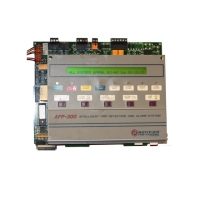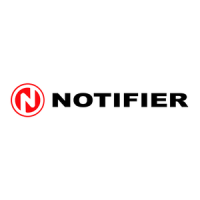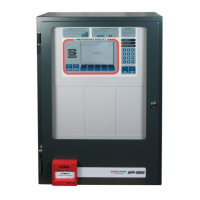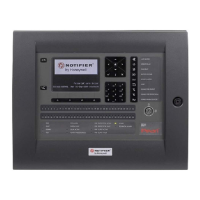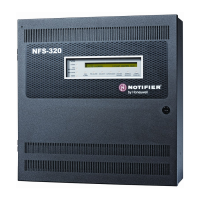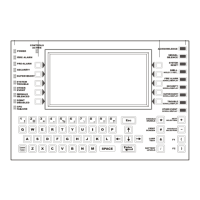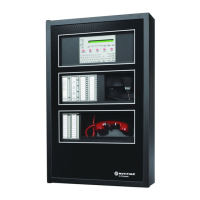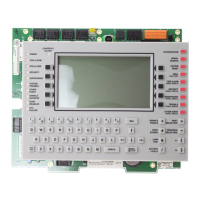Releasing Applications
5-18 AFP-300/AFP-400 Installation PN 50253:C2 10/29/98
9;
When used for CO
2
releasing applications, observe proper precautions as
stated in NFPA 12. Do not enter the protected space unless physical lookout
and other safety procedures are fully completed. Do not use software
disable functions in the panel as lockout.
This control panel can be used for agent release or preaction/deluge control
applications. When used with compatible, listed actuating and initiating devices, the
control panel meets the requirements of these NFPA standards:
( & !-- )
The control panel supports a maximum of ten releasing areas. You can divide the
releasing circuits among the MPS-400 releasing outputs, the ICM-4, ICE-4, and CMX
modules. For more information, refer to the AFP-300/AFP-400 Programming manual.
(
Table 5-10 contains references to wiring diagrams for releasing applications:
)
Standard Covers
NFPA 12 CO2 Extinguishing Systems
NFPA 12A Halon 1301 Extinguishing Systems
NFPA 12B Halon 1211 Extinguishing Systems
NFPA 13 Sprinkler Systems
NFPA 15 Water Spray Systems
NFPA 16 Foam-Water Deluge and Foam-water Spray Systems
NFPA 17 Dry Chemical Extinguishing Systems
NFPA 17A Wet Chemical Extinguishing Systems
NFPA 2001 Clean Agent Fire Extinguishing Systems
To connect... Refer to...
A releasing device to the MPS-400 "Connecting a Releasing Device to the MPS-400" on
page 5-19.
A Releasing Device to an ICM-4/ICE-4 "Connecting a Releasing Device to an ICM-4/ICE-4
Module" on page 5-20.
A releasing device to a CMX Module. "Connecting a Releasing Device to a CMX Module" on
page 5-21.
An N-ARA-10 Agent Release-Abort
Station.
"Connecting an N-ARA-10 Agent Release-Abort
Station" on page 5-22.
A combination waterflow/supervisory
valve monitor
"Installing a Combination Waterflow/Supervisory Valve
Monitor" on page 5-23.
www.PDF-Zoo.com
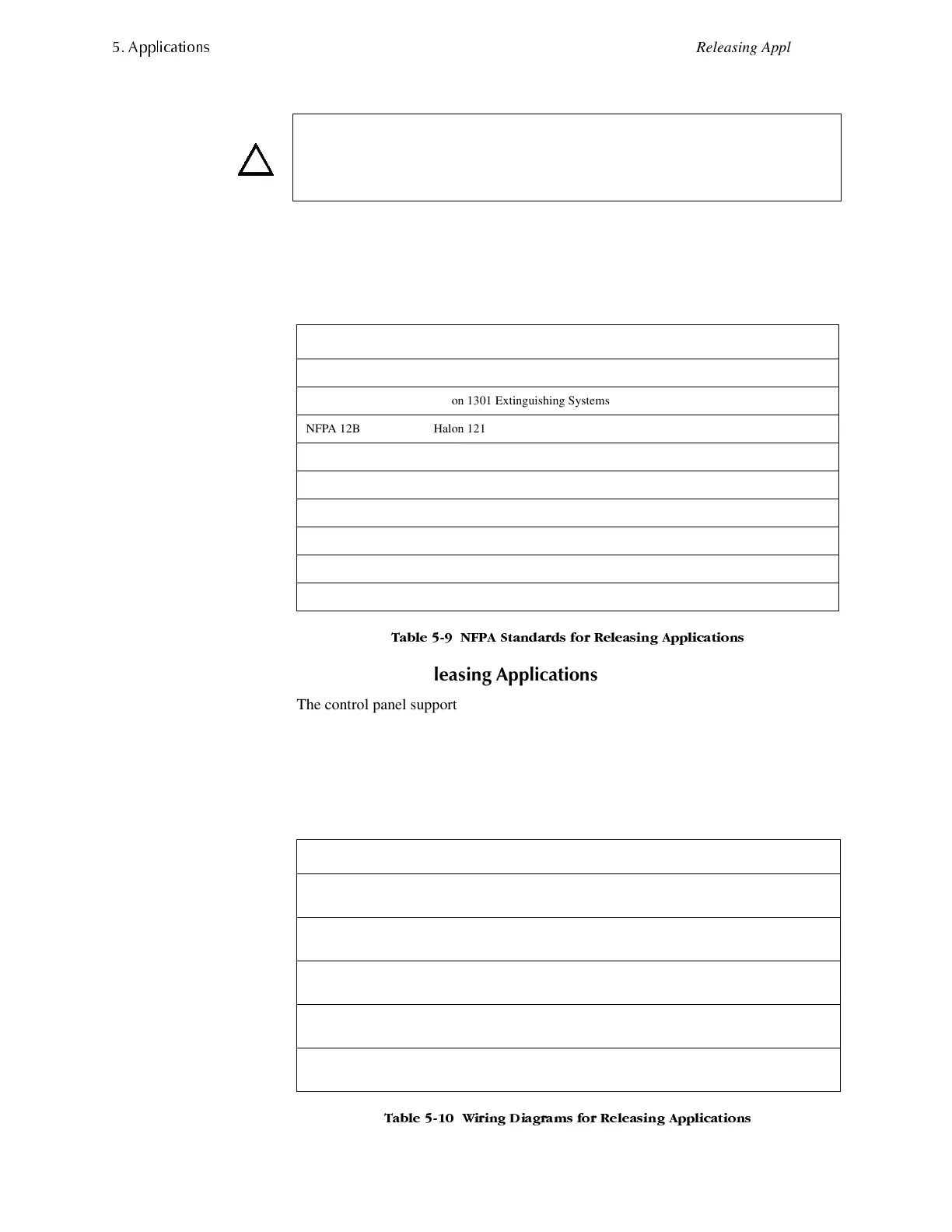